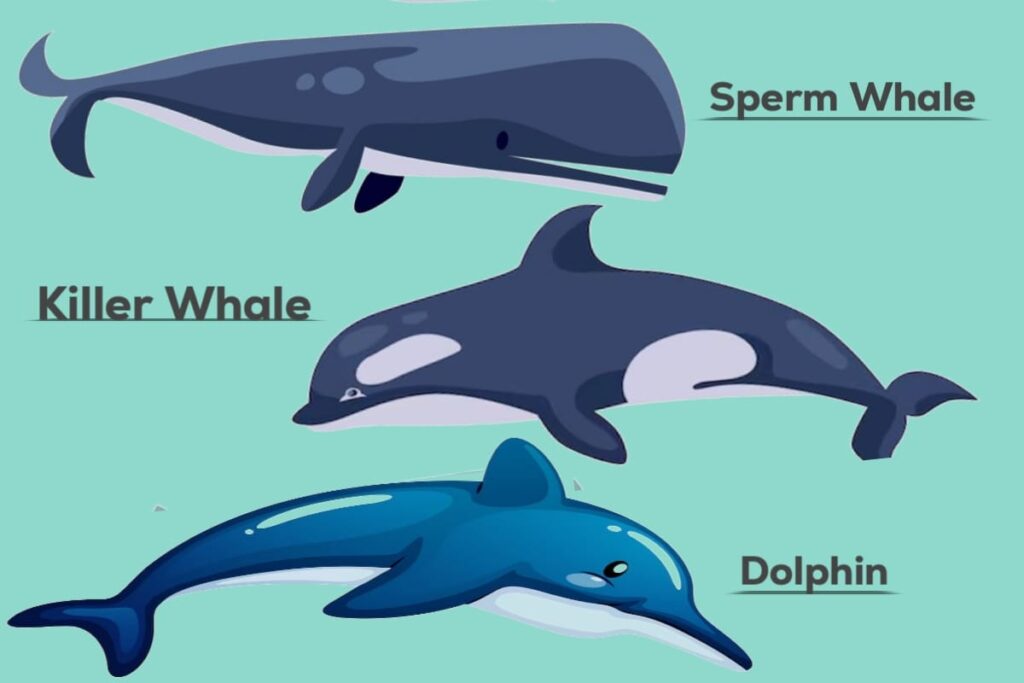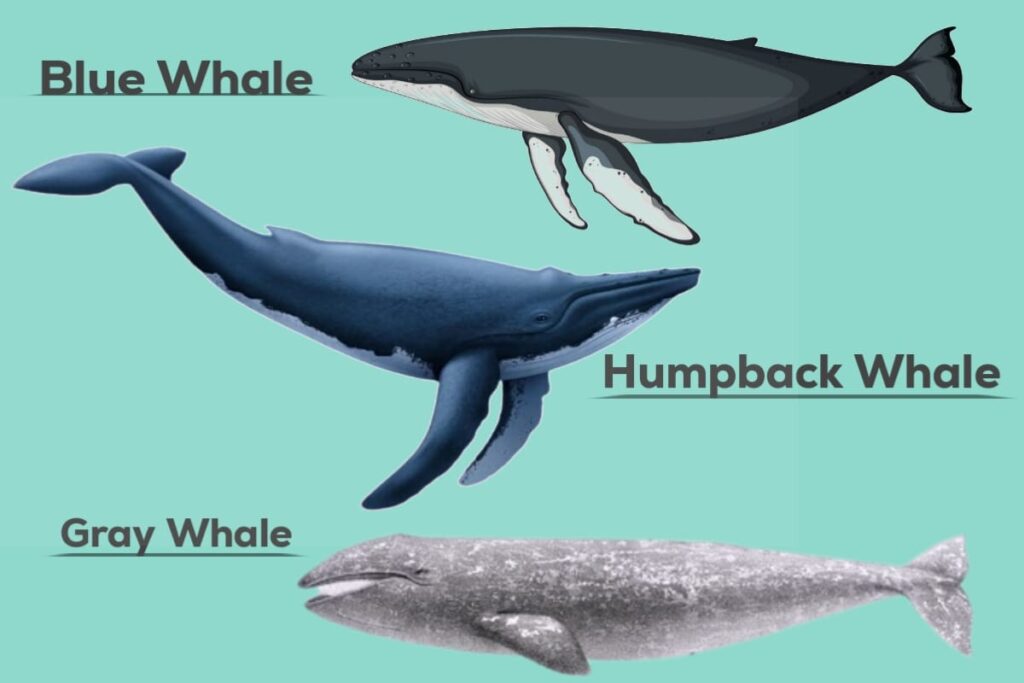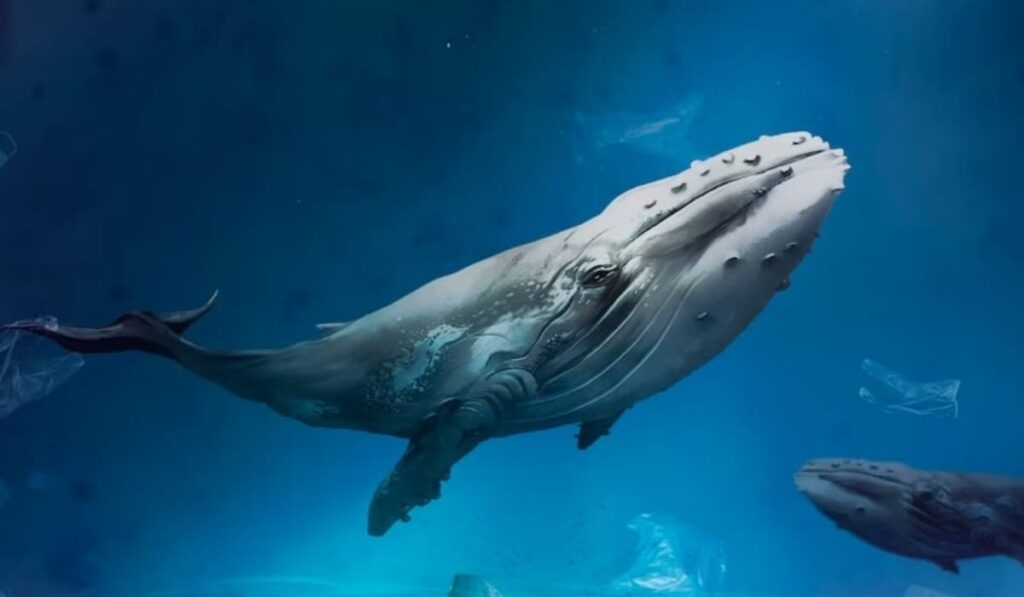Whales, the majestic giants of the ocean, captivate us with their size, grace, and mysterious underwater world. One of the most fascinating aspects of these marine mammals is their ability to hold their breath for extended periods while diving deep into the ocean depths.
In this article, we delve into the incredible breath-holding capabilities of whales that How Long Can Whales Hold Their Breath, exploring the different types of whales and their varying abilities to stay submerged.
The Types of Whales
Whales are classified into two main categories: toothed whales (odontocetes) and baleen whales (mysticetes). Toothed whales, such as sperm whales, killer whales, and dolphins, possess teeth and a single blowhole.
In contrast, baleen whales, including blue whales, humpback whales, and gray whales, have baleen plates in their mouths and two blowholes. These distinctions play a role in their feeding habits, social behaviors, and, notably, their ability to hold their breath.
Exploring Breath-Holding Abilities
1. Toothed Whales:

Toothed whales are renowned for their exceptional diving prowess, which is crucial for hunting prey and navigating the depths of the ocean. Among them, the sperm whale stands out as a true champion of breath-holding.
These colossal creatures can hold their breath for up to an astonishing 90 minutes or more, enabling them to descend to incredible depths in search of their favorite prey: giant squids.
Killer whales, or orcas, also possess impressive breath-holding capabilities, typically ranging from 5 to 15 minutes, depending on factors such as activity level and environmental conditions.
Meanwhile, common bottlenose dolphins, with their playful demeanor and acrobatic displays, can hold their breath for approximately 5 to 10 minutes, showcasing their adaptability to marine life.
2. Baleen Whales:

Baleen whales, characterized by their filter-feeding mechanism and massive size, exhibit a different approach to breath-holding. Blue whales, the largest animals on Earth, can stay submerged for about 10 to 20 minutes during their feeding dives.
Despite their immense size, these gentle giants rely on efficient oxygen utilization and streamlined movements to conserve energy while underwater.
Humpback whales, famous for their enchanting songs and graceful breaches, have breath-holding capabilities ranging from 10 to 15 minutes, allowing them to execute complex feeding behaviors and social interactions beneath the waves.
Gray whales, known for their epic migrations spanning thousands of miles, can hold their breath for approximately 6 to 15 minutes as they navigate between their feeding and breeding grounds, demonstrating their resilience in diverse marine environments.
Suggested Article : How Long do Goats Live
Factors Influencing Breath-Holding
Several factors influence the breath-holding abilities of whales, including species, size, metabolic rate, diving depth, and environmental conditions.
Larger whales tend to have greater oxygen reserves and lung capacities, enabling them to stay submerged for longer periods. Additionally, whales have evolved physiological adaptations, such as higher levels of myoglobin in their muscles and enhanced oxygen storage capacity, to facilitate prolonged dives and efficient oxygen utilization.
Environmental factors such as water temperature, prey availability, and the presence of predators also play a role in shaping whales’ diving behavior and breath-holding capabilities.
The Science Behind Breath-Holding
Understanding how whales hold their breath involves delving into the intricate physiology of these marine mammals. Whales have specialized adaptations that enable them to maximize oxygen storage, minimize oxygen consumption, and withstand the physiological challenges of extended dives. Key adaptations include:
- Myoglobin-Rich Muscles: Whales possess muscles with high concentrations of myoglobin, a protein that stores oxygen and facilitates its transport within muscle tissues. This adaptation enhances oxygen storage capacity and enables whales to sustain prolonged periods of oxygen deprivation during deep dives.
- Flexible Ribcage and Lungs: Whales have flexible ribcages and lungs that collapse under pressure as they dive, reducing the volume of air in their respiratory system and preventing nitrogen narcosis, a condition caused by the buildup of nitrogen in the bloodstream at high pressures. This mechanism helps whales conserve oxygen and maintain buoyancy while descending to great depths.
- Bradycardia and Peripheral Vasoconstriction: Whales exhibit physiological responses such as bradycardia (slowing of the heart rate) and peripheral vasoconstriction (narrowing of blood vessels in peripheral tissues) during dives, redirecting blood flow to vital organs such as the brain and heart and reducing oxygen consumption in non-essential tissues. These adaptations enable whales to optimize oxygen delivery to critical organs and prolong their dive durations.
Why Conservation Matters
The remarkable breath-holding abilities of whales highlight the importance of conserving their marine habitats and protecting them from human-induced threats such as habitat destruction, pollution, climate change, and noise pollution.
By safeguarding the oceans and preserving the ecological balance, we can ensure the continued survival of these magnificent creatures and the biodiversity of marine ecosystems.
Conclusion
Whales’ ability to hold their breath for extended periods is a testament to their remarkable adaptation to life in the ocean.
From the deep-diving prowess of sperm whales to the graceful movements of humpback whales, each species showcases unique strategies for surviving and thriving in their underwater world.
By studying and appreciating these extraordinary marine mammals, we gain insight into the interconnectedness of life in the ocean and the importance of conservation efforts to protect our planet’s precious marine ecosystems.
As we continue to unravel the mysteries of whales and their breath-taking abilities, let us strive to preserve their habitats and ensure a sustainable future for generations to come.
Interesting Facts About Whales

Here are some fascinating facts about whales that highlight their incredible diversity, behaviors, and adaptations:
- Size Matters: Whales are the largest animals on Earth, with the blue whale holding the title for being the largest animal ever known to have existed. These colossal creatures can reach lengths of up to 100 feet (30 meters) and weigh as much as 200 tons.
- Singing Giants: Certain species of whales, such as humpback whales, are renowned for their complex and haunting songs. These songs can travel for long distances underwater and are thought to play a role in communication, mating rituals, and navigation.
- Longest Migration: The gray whale undertakes one of the longest migrations of any mammal, traveling over 10,000 miles (16,000 kilometers) round trip between their feeding grounds in the Arctic and The places where they have babies, in the warm waters near Mexico’s coast.
- Deep Diving: Sperm whales are the deepest-diving mammals, capable of descending to depths of over 3,000 feet (900 meters) in search of their preferred prey, giant squids. These incredible divers can hold their breath for up to 90 minutes or more during their deep-sea forays.
- Filter-Feeding Marvels: Baleen whales, such as the blue whale and humpback whale, are filter-feeders that use baleen plates in their mouths to strain small organisms like krill and plankton from seawater. Despite their massive size, these gentle giants sustain themselves on tiny prey.
- Complex Societies: Whales exhibit complex social structures and behaviors. Some species, like killer whales (orcas), live in tight-knit family groups called pods, where individuals cooperate in hunting, communication, and caregiving for young calves.
- Echolocation Experts: Toothed whales, including dolphins and sperm whales, use echolocation to navigate and locate prey in the dark depths of the ocean. By emitting high-frequency clicks and listening to the echoes that bounce off objects, these whales create detailed mental maps of their underwater environment.
- Ancient Mariners: Whales have a rich evolutionary history that dates back over 50 million years. Fossil evidence suggests that early whales were land-dwelling mammals that gradually adapted to life in the water, eventually evolving into the diverse array of species we see today.
- Cultural Traditions: Some populations of whales exhibit cultural traditions that are passed down from generation to generation. These traditions can include unique feeding techniques, vocalizations, and migration routes, highlighting the cultural complexity of these marine mammals.
- Conservation Challenges: Whales face numerous threats in today’s world, including habitat loss, pollution, climate change, ship strikes, and entanglement in fishing gear. It’s really important to work hard to keep these amazing animals safe. That way, they can stay around for a long time and be enjoyed by people in the future.
These fascinating facts only scratch the surface of the remarkable world of whales, highlighting their importance as keystone species in marine ecosystems and their enduring allure for scientists, conservationists, and nature enthusiasts alike.
Frequently Asked Questions (FAQ)
Do Whales Sleep Underwater?
Yes, whales can sleep underwater, but they don’t sleep like land mammals. They engage in “logging,” where they rest at the water’s surface, keeping half of their brain awake to maintain essential functions like breathing. This allows them to rest while remaining alert to potential dangers.
How Long Can a Whale Breathe Underwater?
The duration varies by species, but generally, larger whales can hold their breath longer. Sperm whales, for instance, can stay submerged for up to 90 minutes. Smaller species like beluga whales may hold their breath for only a few minutes.
How Long Can Whales Hold Their Breath?
Whales’ ability to hold their breath varies by species. Larger whales, like sperm whales, can stay submerged for up to 90 minutes or more. Smaller species, such as beluga whales, may hold their breath for only a few minutes.
How Long can Blue Whales Hold Their Breath?
Blue whales, the largest animals on Earth, typically hold their breath for about 10 to 20 minutes during their feeding dives. Despite their immense size, they have adapted to efficiently utilize oxygen and conserve energy while underwater.
how long is a whale?
The length of a whale varies by species. For example, the blue whale, the largest animal on Earth, can reach lengths of up to 100 feet (30 meters). In contrast, smaller species like the dwarf sperm whale may only grow to about 8 to 9 feet (2.5 to 2.7 meters).






